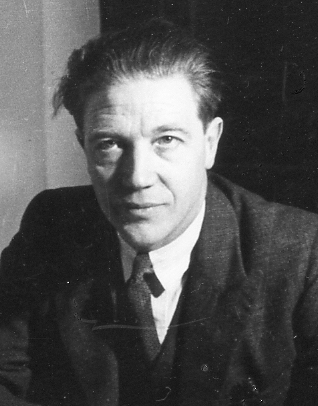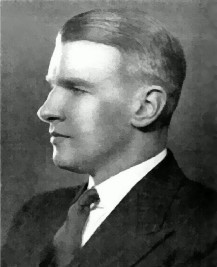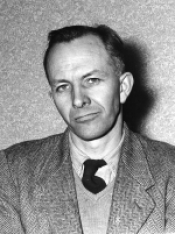
Sir Oswald Ernald Mosley, 6th Baronet, was a British aristocrat and politician who rose to fame during the 1920s and 1930s when, having become disillusioned with mainstream politics, he turned to fascism. He was Member of Parliament (MP) for Harrow from 1918 to 1924 and for Smethwick from 1926 to 1931. He founded the British Union of Fascists (BUF) in 1932 and led it until its forced disbandment in 1940.

The Battle of Cable Street was a series of clashes that took place at several locations in the East End of London, most notably Cable Street, on Sunday 4 October 1936. It was a clash between the Metropolitan Police, sent to protect a march by members of the British Union of Fascists led by Sir Oswald Mosley, and various anti-fascist demonstrators including local trade unionists, communists, anarchists, British Jews, and socialist groups. The anti-fascist counter-demonstration included both organised and unaffiliated participants.

The British Union of Fascists (BUF) was a British fascist political party formed in 1932 by Oswald Mosley. Mosley changed its name to the British Union of Fascists and National Socialists in 1936 and, in 1937, to the British Union. In 1939, following the start of the Second World War, the party was proscribed by the British government and in 1940 it was disbanded.

Arthur Kenneth Chesterton was a British journalist and political activist. From 1933 to 1938, he was a member of the British Union of Fascists (BUF). Disillusioned with Oswald Mosley, he left the BUF in 1938. Chesterton established the League of Empire Loyalists in 1954, which merged with a short-lived British National Party in 1967 to become the National Front. He founded and edited the magazine Candour in 1954 as the successor of Truth, of which he had been co-editor.
The 43 Group was a British anti-fascist group set up by Jewish ex-servicemen after the Second World War. They did this when, upon returning to London, they encountered British fascist organisations such as Jeffrey Hamm's British League of Ex-Servicemen and later Oswald Mosley's new fascist party, the Union Movement. The activities of these fascist groups included antisemitic speeches in public places, and from the rank-and-file fascists, violent attacks on London Jews and Jewish property. Group members broke up far-right meetings, infiltrated fascist groups, and attacked the fascists in street fighting.

The Imperial Fascist League (IFL) was a British fascist political movement founded by Arnold Leese in 1929 after he broke away from the British Fascists. It included a blackshirted paramilitary arm called the Fascists Legion, modelled after the Italian Fascists. The group espoused antisemitism and the dominance of the 'Aryan race' in a 'Racial Fascist Corporate State', especially after Leese met Nazi Party propagandist Julius Streicher, the virulently racist publisher of Der Stürmer; the group later indirectly received funding from the Nazis. Although it had only between 150 and 500 members at maximum, its public profile was higher than its membership numbers would indicate.
Thomas P. Moran was a leading member of the British Union of Fascists and a close associate of Oswald Mosley. Initially a miner, Moran later became a qualified engineer. He joined the Royal Air Force at 17 and later served in the Royal Naval Reserve as an engine room artificer.

Alexander Raven Thomson, usually referred to as Raven, was a Scottish politician and philosopher. He joined the British Union of Fascists in 1933 and remained a follower of Oswald Mosley for the rest of his life. Thomson was considered to be the party's chief ideologue and has been described as the "Alfred Rosenberg of British fascism".
Robert Forgan was a British politician who was a close associate of Oswald Mosley.
British fascism is the form of fascism which is promoted by some political parties and movements in the United Kingdom. It is based on British ultranationalism and imperialism and had aspects of Italian fascism and Nazism both before and after World War II.
Neil Lanfear Maclean Francis Hawkins was a British writer and politician who was a leading proponent of British fascism in the United Kingdom both before and after the Second World War. He played a leading role in the British Union of Fascists and controlled the organisational structure of the movement.

Wilfred Risdon was a British trade union organizer, a founder member of the British Union of Fascists and an antivivisection campaigner. His life and career encompassed coal mining, trade union work, First World War service with the Royal Army Medical Corps (RAMC), political and animal welfare activism.

The Battle of Stockton, took place on 10 September 1933 at the Market Cross in the High Street of Stockton-on-Tees, County Durham, England. It was a clash between members of the British Union of Fascists (BUF) and anti-fascist demonstrators from the small local Communist Party and National Unemployed Workers Movement (NUWM).

James Larratt Battersby was a British fascist and pacifist, and a member of the Battersby family of hatmakers of Stockport, Greater Manchester, England. He was forced to retire from the family firm due to his politics and was interned by the British government during the Second World War along with other British fascists. During his detention he came to believe that Adolf Hitler was Christ returned, and after the war wrote The Holy Book and Testament of Adolf Hitler. He committed suicide by leaping into the paddle wheels of a ferry.

Robert Row (1915–1999) was an English fascist from Lancaster, a member of Oswald Mosley's British Union of Fascists (BUF) who was detained by the British government under Defence Regulation 18B during the Second World War. After the war, he wrote and edited British fascist publications and remained a believer in Mosley until his death.

The Friends of Oswald Mosley (FOM) is the last vestige of Oswald Mosley's British Union of Fascists (BUF) and its successors, the Union Movement and the Action Party.

John Warburton was an English fascist and press photographer. He was an assistant district leader for the Clapham branch of Sir Oswald Mosley's British Union of Fascists (BUF) before the Second World War, and afterwards was a key member of the Union Movement, the founder editor of Comrade, and the senior Council member of Friends of Oswald Mosley.
The Battle of South Street was a riot that took place on 9 October 1934 in Worthing, Sussex, England. The riot took place as members of the British Union of Fascists and various anti-fascist protesters clashed following a meeting of Fascists at the Pier Pavilion. The riot involved a series of clashes along and close to the length of South Street from the Pier Pavilion and the Royal Arcade at its southern end to the junctions with Warwick Street and Market Street further north.
The Battle of De Winton Field was a clash between the British Union of Fascists and various anti-fascist demonstrators that took place in Tonypandy, Wales, on 11 June 1936. It was the BUF's last attempt to hold a rally in Wales.
The Battle of Carfax (1936) was a violent skirmish in the city of Oxford between the British Union of Fascists (BUF) and local anti-fascists, trade unionists, and supporters of the Labour Party and the Communist Party of Great Britain. The battle took place inside Oxford's Carfax Assembly Rooms, a once popular meeting hall owned by Oxford City Council which was used for public events and located on Cornmarket Street.















